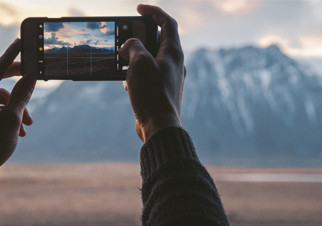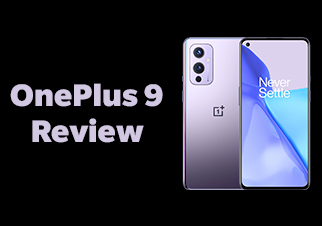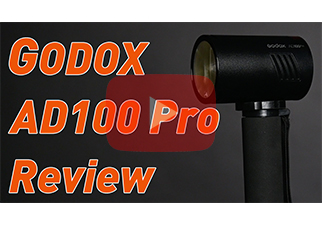“I
will not harm my subject!”
Every
photographer should happily follow this simple rule – even when no
one else is watching.
This
is not a hard job for anyone, and for those with a true love, nature
is always priority for them. Unfortunately, thanks to the huge
numbers of photographers who now own professional photography gears,
and are perpetually on the look out for nature subjects to capture
and instant satisfaction after uploading the images on social media
and there are examples of photographers damaging wildlife or habitats
in chase of the perfect shot, which has been alarmingly common. Many
of it is due to a lack of awareness and knowledge.
Whatever
it might be, one thing is sure, if right-minded nature photographers
get together, we can stamp out the danger of unethical photography to
a large extent and it will also help the beginner generation to learn
ethics. Self-regulation is the best regulation, so make sure to
follow all the rules before you step into widlife.
Then,
now and will
One
of the most shocking chapters in the history of wildlife photography
in India is the bird nest photography trend that outspread like
wildfire in the early 1990s. Battling to other photographers, many
photographers skilled a level of harshness and insensitivity that was
terrifying. Their practice was a bit simple: they would watch around,
or offer money to the locals, for finding the active nests for them.
Once the nest of a wanted species was located, the photographer would
go and do some gardening – a substitute for removing branches or
leaves to get a proper view of the nest. With the obstacles out of
the way, nesting activity would be captured from all the angles,
sometimes using external flashes placed around the nest. Once the
photographer was satisfied with their results, they would leave,
exposing nest open to predators. Some photographers even destroyed
the nest (or eggs or chicks) so that others could not take capture
the image they have.
This
battle was in trend for few years, until there was strong stricture
from photographers and nature conservationists with a moral sense.
The harmful practice finally end when nest images were banned from
competitions.
Back
then there were very less nature photographers in India, so any harm
caused by a few unethical photographers was very less. Since there is
no entry exam or test for newcomers, the annual increase in the
number of wildlife photographers was tremendous. Cameras and lenses
was very expensive due to custom tax duties. It was very hard to see
a photographer with a 300mm lens. Film and printing was costly too.
And not every photographer had a car to take off in the outskirts on
weekends. The kind of budget needed to follow this costly hobby was
largely limited to very few people.
But
all that was transformed with economic reforms and the technology
upgrade. Suddenly, beginners were able to get five-figure salary jobs
straight after graduation. At the same time, custom tax dropped down,
camera manufacturers started setting up dealerships in India, social
media started becoming a trend, and wildlife documentaries on TV and
internet lighted an tremendous thirst for travel and photography.
Nature photography as a hobby increased like a boom.
While
its not a crime with enjoying nature and capture wildlife, how one
does it that matters. Enjoyment must always be baked with
responsibility. Unfortunately in India, the two rarely go hand in
hand. You will mostly see an educated person who’s the wrongdoer
rather than some uneducated. And there are millions of educated
people with high sound cars, but with utterly no sense of road rule
and then there are thousands of educated people with the best cameras
and lenses, but very less love towards nature.
Unethical
photography? What’s that?
Many
photographers likely don’t even think about their impact on nature
and wildlife, and may take animals simply as models that exist for
capturing pleasure. They don’t even think that their actions can
cause stress to an animal. Simply becoming aware of the issues might
make any photographer good and helpful. And those who are decent and
can think properly on their next outing, and change their behaviour
appropriately will be a great help.
For
example if we consider one of one of the world’s rarest birds, the
critically endangered Great Indian Bustard. This large bird, which is
found in grasslands, is extremely shy of human interaction. When it
spots a intruder even hundreds of metres away, its reaction is to
hold whatever it is doing and fix its eye on the intruder. As long as
it feels threatened, the bird will not feed, court or mate. As a
result of the disturbing activity caused by some few photographers,
the Ministry of Environment and Forests (MoEF) was forced to issue a
circular restricting photography of the bustard during its mating
season.
Damage
to habitats can be big too, when many people and their vehicles are
found on a particular location. For example, the Hesaraghatta
grasslands on outskirts of Bangalore suffered high damages as a
result of insensitive weekend bird photographers. Luckily, thanks to
the problem being highlighted and talked about on social media and
photographers, there has been a change for the better in some areas.
While
it’s impossible to measure or list every type of unethical
behaviour of every unethical person; awareness, knowledge and common
sense are the best guides for every photographer out there. If you
think that something you are doing, or are planning to do, may cause
harm to your subject or habitat, back it off. It’s that simple.
The
way forward
Like
it or not, the craze for wildlife photography seems to be growing
like anything in India. So it’s better that we work together to
decrease the negative impacts. Well as of now we don’t have any
‘All-India Association of Nature Photographers’ to set rules and
regulations and supervise behaviour, how do we go about controlling
the practice of nature photography by every nature lover in our
country? There isn’t any one way of practising it, but that doesn’t
mean we should give up our responsibility to protect the nature.
The
best and most important factor in changing behaviour of the coming
generation might be to set a good example or inspiration. Good
inspiration or role models are important in every field, and wildlife
photography is not different. If you are a experienced photographer,
try to be a good role model for your audience, and lead by example.
If newbies are following you and have questionable practices, they
will learn and assume that this is how wildlife photography is to be
done, and imitate you. If you are seen having respect for nature and
wildlife, not only will your respect go up, but your attitude may
also put a good impact on others.
After
you are experienced, you will definetely also have a lot of followers
on social media platforms. Reach out to the professionals once in a
week with messages about ethics in wildlife photography. Also try to
share the tips with your fellow followers as well as it will make a
strong belief on those who are still not aware about the ethics in
field.
If
you are conducting wildlife photography workshops, start and end each
workshops with a strong appeal for ethical behavior when capturing
nature. Make your audience take a honest pledge towards ethics. This
will definitely impact those who have less knowledge or are less
aware. As for those who simply don’t care about nature and
wildlife, they will be automatically change their behavior when more
and more photographers become humble towards nature and intolerant of
unethics.
To
multiply your positive effect among the younger generation, the most
important thing is not to be distrustful about your knowledge to
bring about optimistic behavioural change in other photographers.
Here’s an example of something that all have seen in our
surroundings: when a area or road is kept clean due to the efforts of
some of its locals, others think before littering the place. Even if
they do, there are eyes to criticise or shame them, making sure that
they don’t litter again, that’s how you bringing everyone into
line. In the same way, you can clean up unethical wildlife
photography, if we practice together and learn what’s right.
Examples
of unethical practices and how to curtail them
While
it’s not possible all the time to specify ‘unethical’ in black
and white terms, or point out every example.
Please
note that some of these activity, in addition to being unethical, are
illegal and violate various wildlife and environmental laws. If
reported, they could draw in strong penalties and legal action.
Issue
1: Crowding
Too
many visitors or safari jeeps gathering around an wild animal in
National Park or Wildlife sanctuary, or purposely going too close to
provoke a growl or a attack.
Impact:
Causes
high stress, and breaks the wild animal’s natural behaviour, such
as courtship, hunting and feeeding. In the case of big animals like
big cats or elephants, regularly being close to them can be
dangerous.
Remedy:
When
you sight a wild animal, always keep a safe distance between the
safari and wild animal. When you see other safari coming, take a few
photographs and leave that spot. If you see any officials, drivers or
photographers breaking the rules, carefully take a picture or video
of this and report it to someone in authority.
Issue
2: Nest or den photography
Capturing
images of mammals at their dens orbirds at their nests.
Impact:
This
causes disturbance and stress in animals and they can abandon the
nest or den. In the case of big cats, it forces the parents to move
their juveniles to another den, which can be dangerous for them. This
can also attract other unethical photographers and poachers too.
Remedy:
Avoid
capturing images of nest or den. Stay away from newborns or
juveniles. This also includes manipulating nest or nest area.
Publishers and competitions should be very strict about accepting
nesting and den photographs.
Issue
3: Playback of birdcalls to attract birds
Impact:
Wildlife
survey have shown that this can cause stress to birds. The available
study material advice that replying to call-playback may effect in
bird energy, disturbs their territory and can lead to pair break-ups.
Playing bird sounds during their mating season can confuse adults
from more crucial tasks like mating, guarding the nest, and defending
their territories.
Remedy:
Refrain
from use of bird calls, particularly for rare and endangered birds.
Issue
4: Handling amphibians and reptiles for photography
Impact:
To
start this, picking up and handling wild animals is illegal. It also
causes them terrible stress. If a snake is feeding on something, the
first response to handling will be to vomiting its food.
Amphibians
can be infected with bacteria from your hands, which can be fatal to
the individual and sometimes to the whole species in the area. Taking
them out of their habitat will cause their body or skin to dry up,
and can be tough to survive. Some photographers refrigerate
fast-moving reptiles and amphibians in order to slow their activity
for capturing images. This is extremely damaging to their body and
may even cause death, not in front but after you have moved on from
the spot.
Remedy:
Capture
images of reptiles and amphibians in their natural habitats without
handling or moving them. Work with an ethical herpetologist or guide
to ensure that no harm comes to wildlife.
Issue
5: Speeding in wildlife habitats
Impact:
Driving
fast to sight a animal or to exit the national park before the gate
shuts, not only frightens animals but can lead in animals getting run
over. Although speeding is strictly not allowed in wildlife areas, it
is quite common to see.
Remedy:
Follow
the speed limits. If there is no speed limit mentioned, try to keep
low speeds (20 kmph) to make sure that there is decent time to stop
the vehicle if an animal suddenly crosses your path. File complaints
against drivers who speeds the vehicle.
Responsibility
from publishers & editors
We
think that it is a responsibility of publishers and editors of
wildlife and photography magazines or books, as well as social media
pages and Facebook groups, to ensure that their audience meet ethical
standards before publishing their images. Photos that are problematic
should not be accepted.
Conclusion
We
believe that following these rules and sharing them with every
wildlife and nature photographers will improve the well being of
wildlife and natural habitats. In this field, a photographer must
have a good mind and, when in doubt, nature and wildlife should
always get the profit of doubt.
Let’s
enjoy nature responsibly!




 1 (6).jpg)
 1 (8).jpg)
 1 (4).jpg)
 1 (2).jpg)
 1 (7).jpg)
 1 (5).jpg)











 2.jpg)
 5.jpg)
 4.jpg)
 3.jpg)
 1.jpg)